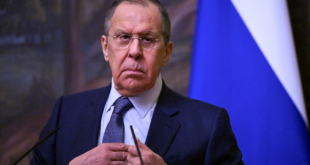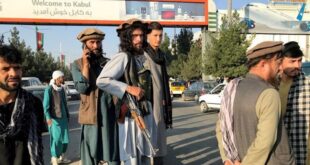By Raju Gopalakrishnan, Reuters
When U.S.-led forces defeated the Taliban rulers of Afghanistan in 2001, the Hazaras, a tribe living in the central mountains, cheered the loudest.
The mostly Shi’ite Hazaras had been oppressed by the Sunni rulers in Kabul through centuries of tumultuous Afghan history.
But when the strictly Sunni Taliban came to power in 1996 they didn’t just oppress the Hazaras, they massacred them.
Thousands of Hazaras, reviled by the Taliban as infidels, were killed and buried in mass graves or thrown into wells. Tens of thousands more were jailed.
More than five years after the U.S.-backed administration of President Hamid Karzai took power, many Hazaras say they are still waiting for signs that their community, and their homeland Hazarajat, will get equal treatment in the new Afghanistan.
“Even when Karzai sleeps, he does not turn his face to Hazarajat,” said one man in Bamiyan, the main town in the area.
Billions of dollars in foreign aid have poured into Afghanistan since 2001. But there are no paved roads in Bamiyan province at all. Many of its 500,000 people live in caves or in mud huts through searing summers and harsh winters, and perhaps a handful have piped water and electricity.
The impoverished Hazaras, easily identified by their Mongol features, have been second-class citizens for centuries.
“They are oppressed by all the neighboring nations, whom they serve as hewers of wood and drawers of water,” wrote Alexander Burnes, a 19th century traveller. “All the drudgery and work in Kabul is done by Hazaras.”
MONGOL INVADERS
The tribe is believed to be descended from Mongol invaders — Hazara means “thousand” in Persian and could signify a unit in an army. Their homeland, surrounded by towering peaks, is almost inaccessible in winter except by air.
Despite the hardships, many residents in Bamiyan say life in Karzai’s Afghanistan is an improvement.
“There have been over 300 years of discrimination, but it’s much better now,” says Mahdy Mehraeen, a coordinator for a United Nations project in Bamiyan. “You can’t get rid of it in a few years. I still don’t think we are equal to others.
“I have never felt equal to a Pashtun since I was born,” the 27-year-old says, referring to Afghanistan’s dominant Sunni tribe, that also forms the core of the Taliban.
“Maybe my children, or my grandchildren, will be.”
Bamiyan’s governor, Habiba Sarabi, a Hazara and the only woman to hold the post in Afghanistan, speaks in a similar vein.
“Now we feel free and we can breathe normally,” she says. “If we can use this opportunity, we can benefit. Of course everything is not perfect, we have much work to do.”
Less than a kilometer (a half-mile) from her office, hundreds of impoverished Hazaras live in mountainside caves, next to where the Taliban blew up 6th century Buddha statues in 2001.
Fatima Mohammad, who says she is about 25, has lived in one for the past three years, since she and her family returned from Iran, where they had fled during Taliban rule. Her husband works as a construction worker in the Bamiyan bazaar.
She pays 200 Afghanis (about $4) in monthly rent for the cave. There is no electricity. A small river about a kilometer (a half-mile) away is the nearest source of water.
Four days ago, she says, her baby son Zahron, a toddler she was holding in her arms, was bitten by a scorpion that fell from a crack in the cave. Most are infested by the creatures.
Asked what it was like being a Hazara in Afghanistan, she said: “I have no food for my children, no home. I don’t care about my nationality.”
 Eurasia Press & News
Eurasia Press & News



